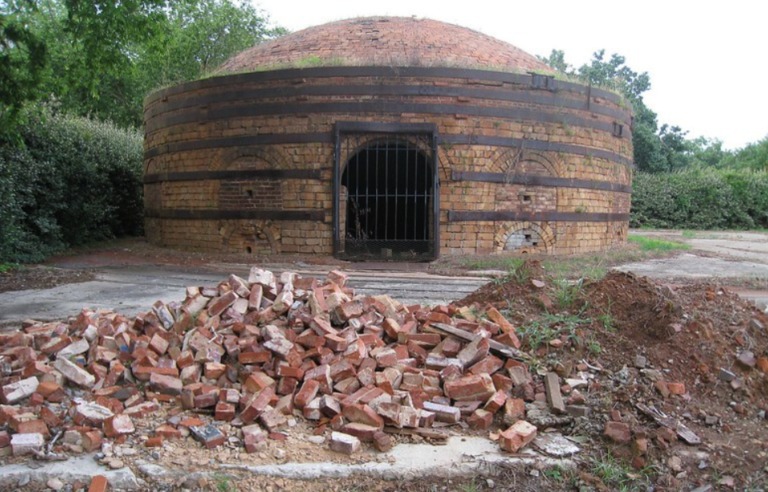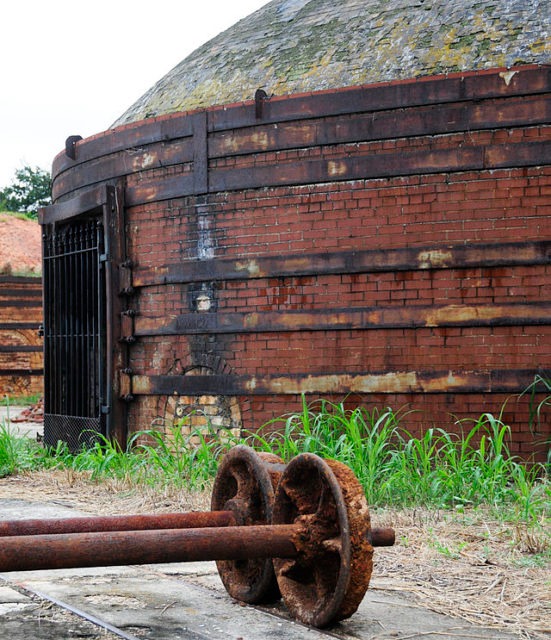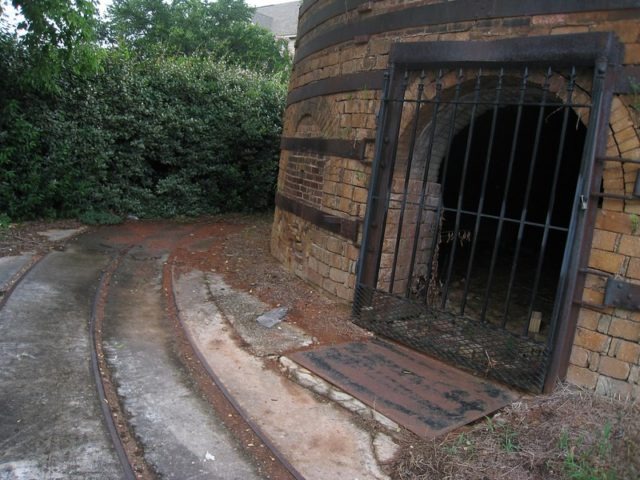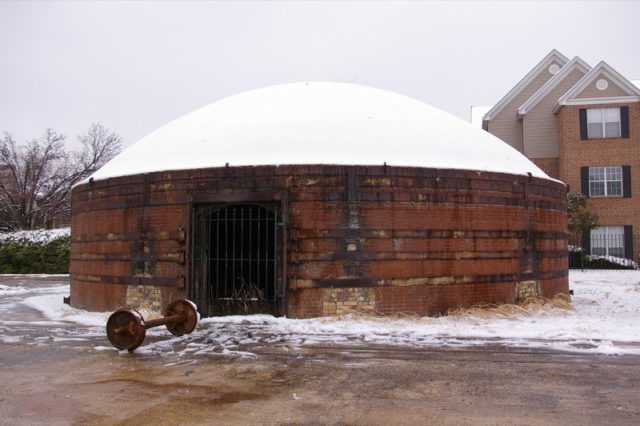
Situated along the banks of the Congaree River in Cayce, South Carolina, the remnants of Guignard Brick Works offer the public a glimpse of the state’s industrial boom during the 19th and early 20th centuries. The property’s beehive kilns were responsible for the production of millions of bricks each year, but were later deemed obsolete following the construction of tunnel kilns.
History of Guignard Brick Works

Guignard Brick Works was started on the site of the Still Hopes Plantation, which had been established by John Gabriel Guignard in the 1700s. His son, James Guignard, began hauling silt from the nearby Congaree River, from which he fired bricks. By the mid-1800s, the venture had become so successful that both Guignards began producing bricks commercially.
Following a brief pause during the American Civil War, Guignard Brick Works restarted production. By 1890, the company was producing an estimated two million bricks annually, prompting the family to construct modern infrastructure and facilities. This included a railroad track, which helped transport silt from the river to the site.
The company, again, paused production during the First World War, and it remained with the family until the death of Susan Guignard in 1955. It was then operated by L.V. Bruno, who continued to produce bricks at the site until 1974. It was around that time that the Congaree’s supply of silt began to dry up, prompting the company to move its operations to Lexington.
The company was purchased by Boral Bricks in 1976.
The advantages of beehive kilns

The firing process at Guignard Brick Works was done through the use of “beehive” downdraft kilns, which introduce and exhaust heat from the bottom, as opposed to the top. The 18 feet by 35 feet structures are constructed entirely of brick and topped with a domed roof, which allows air to circulate throughout the interior, hardening the bricks.
There are currently four kilns on the site, three from 1920 and the fourth dating back to the 1930s. To prevent them from exploding under the intense heat, they were wrapped in thick metal bands. However, this didn’t always stop them from burning down, as one was destroyed by fire in 1932.
The beehive kilns were used until L.V. Bruno began running Guignard Brick Works. He had tunnel kilns constructed on the site, which helped streamline the production process and rendered the older kilns obsolete.
Guignard Brick Works is a historic industrial site

Guignard Brick Works was added to the National Register of Historic Places in 1995. The site is free to visit, with officials from South Carolina promoting it as a way for the public to see the role the state played during the industrial boom in the American South. In fact, many of the bricks fired there can be found in buildings across the region.
